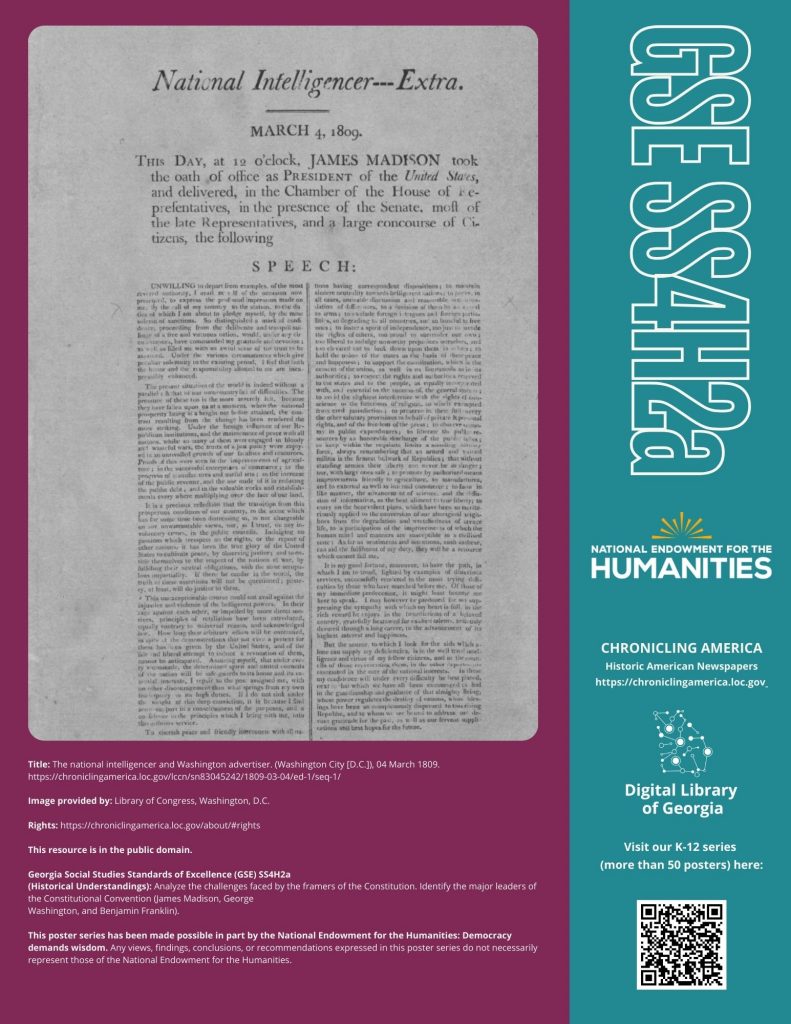
New poster for Georgia K-12 GSE social studies standard SS4H2a
Get the latest printable poster in a series designed for the Georgia K-12 community by the Digital Library of Georgia, based upon the Georgia Social Studies Standards of Excellence.
These resources provide high-quality, standards-aligned materials that help teachers meet their students’ varying academic interests and needs.
The latest poster is for the Georgia 4th Grade Social Studies Standard of Excellence (GSE) SS4H2a (Historical Understandings):
Analyze the challenges faced by the framers of the Constitution. Identify the major leaders of the Constitutional Convention (James Madison, George Washington, and Benjamin Franklin).
View the newspaper here: Front page of The national intelligencer and Washington advertiser. [volume] (Washington City [D.C.]), 04 March 1809 (opens in a new tab)
Image provided by: Library of Congress, Washington, D.C.
View the rights statement here:
https://chroniclingamerica.loc.gov/about/ (opens in new window).
This resource is in the public domain.
Download the poster here (opens in new window).
The poster has been designed to fit an 8.5” x 11” letter-sized sheet of paper, and all content is in the public domain to ensure print accessibility for all students and educators.
Heads up, Georgia K-12 social studies teachers!
View our educator resources at
https://bit.ly/DLGEducatorResources (opens in new window),
where you can find:
- Our entire K-12 poster series
- Georgia Standards of Education-aligned Social Studies teaching modules for 2nd, 3rd, 4th, 5th, and 8th graders
- Resources for teachers and students participating in National History Day (opens in new tab) (opens in new window) and National History Day Georgia (opens in new tab).


